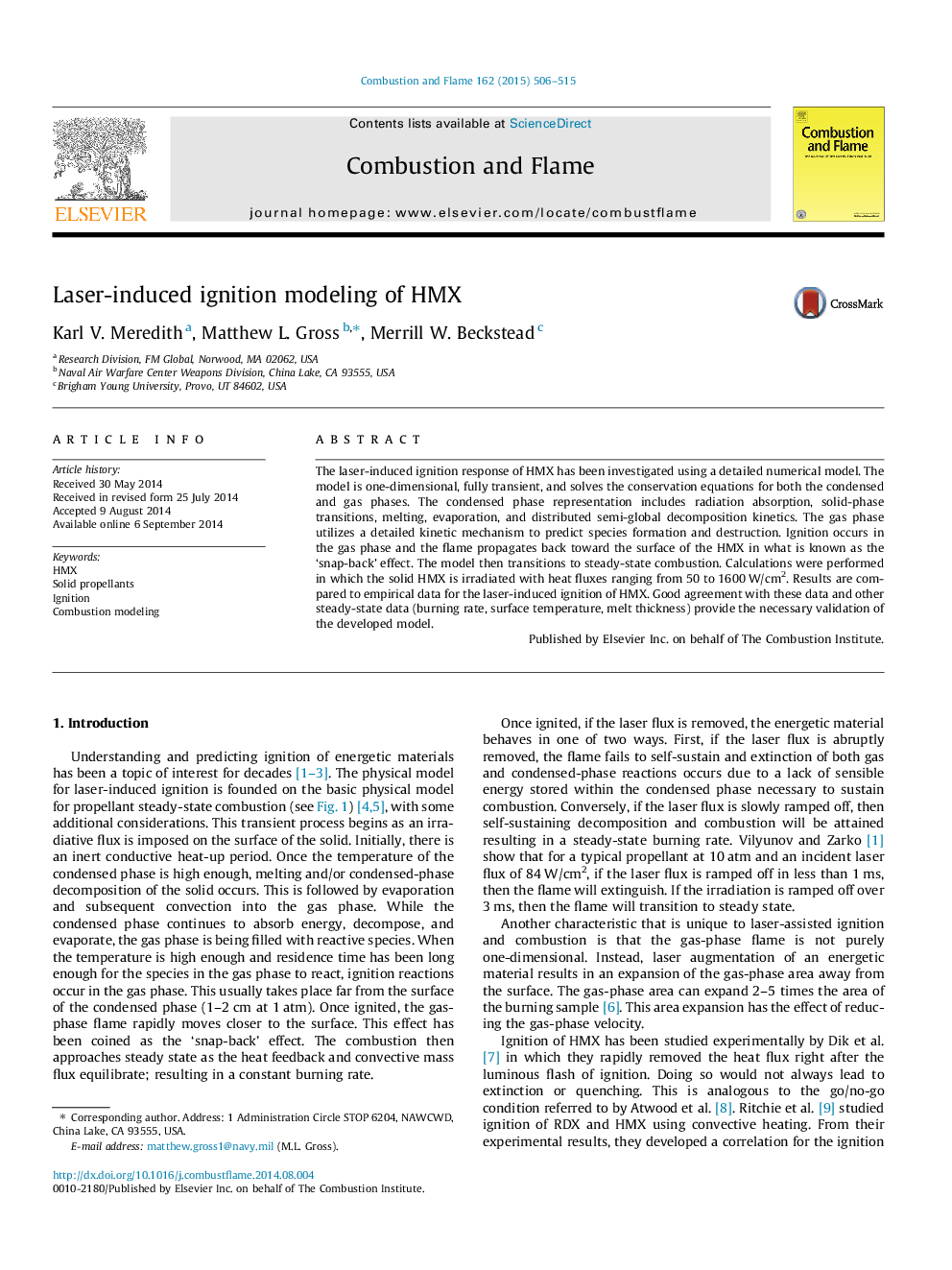| Article ID | Journal | Published Year | Pages | File Type |
|---|---|---|---|---|
| 168873 | Combustion and Flame | 2015 | 10 Pages |
The laser-induced ignition response of HMX has been investigated using a detailed numerical model. The model is one-dimensional, fully transient, and solves the conservation equations for both the condensed and gas phases. The condensed phase representation includes radiation absorption, solid-phase transitions, melting, evaporation, and distributed semi-global decomposition kinetics. The gas phase utilizes a detailed kinetic mechanism to predict species formation and destruction. Ignition occurs in the gas phase and the flame propagates back toward the surface of the HMX in what is known as the ‘snap-back’ effect. The model then transitions to steady-state combustion. Calculations were performed in which the solid HMX is irradiated with heat fluxes ranging from 50 to 1600 W/cm2. Results are compared to empirical data for the laser-induced ignition of HMX. Good agreement with these data and other steady-state data (burning rate, surface temperature, melt thickness) provide the necessary validation of the developed model.
